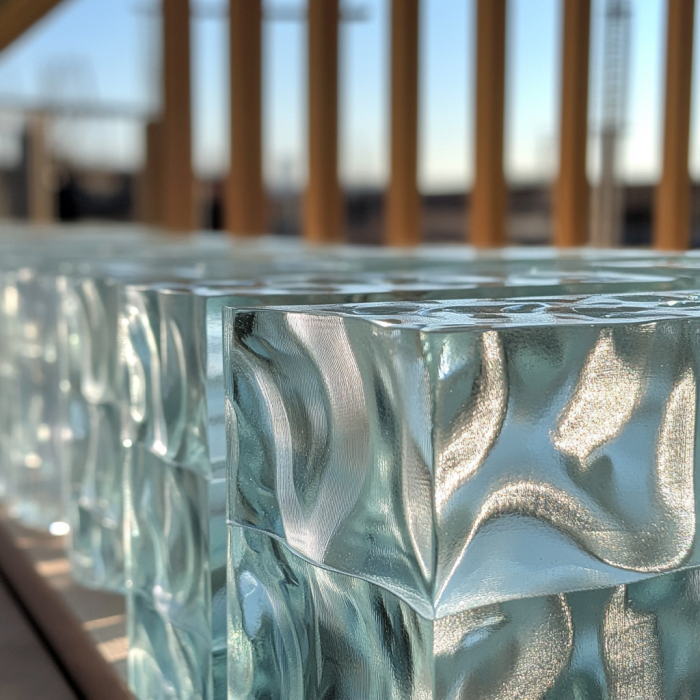

In an era where sustainability and innovation are key drivers of success, the construction industry is undergoing a transformation. Companies are increasingly integrating recycled materials into building projects, presenting new possibilities for eco-friendly practices. One groundbreaking development comes from MIT engineers, who have created 3D-printed glass blocks made from recycled glass. These blocks aim to revolutionize traditional construction methods by promoting a circular economy and reducing waste. Let’s explore how this innovative technology is set to reshape the future of construction.
The 3d printing process involves the precise layering of materials to create objects from digital designs. When applied to glass, it allows for the fabrication of complex shapes and structures that were previously unattainable. This emerging technology is not only a testament to human creativity but also a significant step towards minimising environmental impact.
Using recycled materials, specifically glass, as the foundation of these blocks is pivotal. This approach reduces reliance on raw resources, lowers energy consumption, and promotes waste management. By transforming discarded glass into durable, aesthetically pleasing blocks, MIT’s innovative approach aligns with global efforts to minimize pollution and combat climate change.
The primary goal of our small group’s use of 3D-printed glass blocks is to advance sustainable building practices. The ability to recycle and reuse these blocks fosters a circular economy, where materials are continuously repurposed instead of discarded. This marks a significant departure from traditional construction methods that often generate substantial waste.
The interlocking design of the glass blocks, reminiscent of LEGO bricks, offers structural benefits for our company’s projects. The modular system allows for flexibility in architecture, enabling the creation of intricate building designs with durable and stable connections. This approach not only enhances structural integrity but also streamlines the construction process.
Despite the promising potential of 3D-printed glass blocks, challenges exist. The production cost associated with the manufacturing of these innovative blocks is currently high. Scaling up the manufacturing process to meet industry demands while maintaining cost-effectiveness remains a crucial hurdle.
Another challenge lies in the thermal insulation properties of glass. While visually appealing, glass is not known for its insulating capabilities. Researchers are actively exploring ways to enhance the insulating properties of these blocks to ensure they meet modern building standards for energy efficiency.
The use of recycled materials in construction is not merely a trend but a necessity for the future. The adoption of eco-friendly building practices aligns with the global movement towards environmental sustainability. By integrating recycled glass into structural components, the industry can significantly reduce its environmental impact and contribute to the fight against climate change.
The successful integration of 3D-printed glass blocks into mainstream construction could serve as a catalyst for change. It has the potential to influence other industries, encouraging the widespread use of recycled and sustainable materials. This shift would not only benefit the environment but also position businesses as leaders in the sustainable architecture movement.
Innovation in construction is not just about adopting new technologies; it’s about rethinking how we build and live, much like the changes brought by the industrial revolution. The development of 3D-printed glass blocks from recycled materials exemplifies this shift while honoring our cultural heritage. Although challenges remain, the potential benefits for sustainability, efficiency, and design flexibility are undeniable. It’s time for a small group within the architecture and construction sectors to explore and embrace these new products. By doing so, companies contribute to a greener future and play a vital role in the global effort to mitigate environmental impact, ensuring proper maintenance of our built environment.
This website uses cookies to improve your experience. Choose what you're happy with.
Required for the site to function and can't be switched off.
Help us improve the website. Turn on if you agree.
Used for ads and personalisation. Turn on if you agree.
This website uses cookies to improve your experience. Choose what you're happy with.
Required for the site to function and can't be switched off.
Help us improve the website. Turn on if you agree.
Used for ads and personalisation. Turn on if you agree.